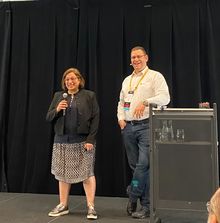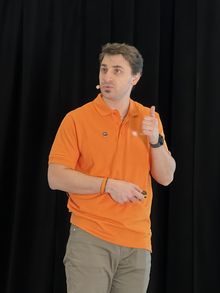
KEGON was not only a sponsor, but also had its own booth. The event was a fantastic platform for inspiring discussions and brought us many new ideas. Elmo - our secret star - was a great success and attracted many visitors. Read more about our experience at this influential event.

Our Business Agility Team enjoyed a lively visit to the KEGON stand, sharing their expertise with a diverse and interested audience. For the first time we shared a booth with our partners Seibert Media GmbH, codecentric AG, CO Improve and PEDCO AG for the successful Implementation Flow Network.
Our colleague Konrad Swistelnicki had the privilege to conduct several coaching sessions as part of the SAFe® Expert Coaching. The opportunity to contribute to the SAFe® Business Agility Podcast.
The challenge of successfully integrating Business Agility into large organizations is the common denominator of most of the topics discussed. AI is ubiquitous and already part of our life and work culture. The insights from the keynotes by Mik Kersten and Dr. Steve Mayner on the role of AI in the future of work stimulated many ideas and discussions.
Kurt Jäger's presentation "The Thunder Can Already Be Heard: Unveiling the Unseen AI Forces in the Economics of Flow" followed the AI theme and highlighted the core problem of many current transformations, especially in the German automotive industry. Using the example of the car manufacturer Tesla, he showed how a company can become successful through agility.

In their presentation "Portfolio Prioritization is a Balancing Game not a Popularity Contest", Deema Dajani and Nikolaos Kaintantzis emphasized the need for a balanced portfolio and the importance of evaluating strategic issues when prioritizing portfolios.

In his presentation “Flow Leadership: Lasting Value via System Thinking”, Joseph ASSAF shared his experiences with agile projects in the construction industry. He illustrated how systemic thinking can be used to foster engagement and collaboration, break silos and successfully deal with constraints by using a “workflow” approach instead of a pure scheduling approach to managing dependencies.



